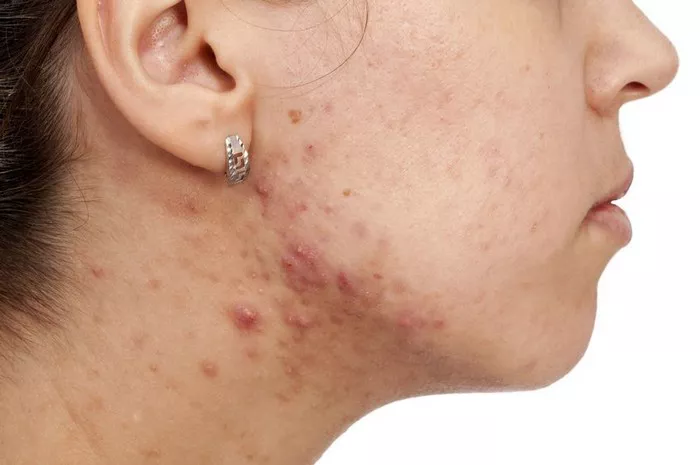Hidradenitis suppurativa (HS) is a chronic skin condition that can be painful and difficult to manage. Diagnosing HS is crucial for effective treatment. In this article, we will discuss the process of diagnosing hidradenitis suppurativa in detail.
Understanding Hidradenitis Suppurativa
Hidradenitis suppurativa is characterized by painful bumps or abscesses in areas where skin rubs together. Common sites include:
- Armpits
- Groin
- Under the breasts
- Buttocks
- Inner thighs
These bumps can rupture, leading to drainage and scarring. The condition may be confused with other skin issues, making accurate diagnosis essential.
Symptoms of Hidradenitis Suppurativa
Recognizing the symptoms is the first step in the diagnosis process. Symptoms of HS include:
- Painful lumps or nodules
- Drainage of pus or blood
- Foul-smelling odor from drainage
- Blackheads in the affected areas
- Scarring or skin changes over time
These symptoms can vary from person to person. Some may experience flare-ups, while others may have more consistent symptoms.
Consulting a Healthcare Provider
If you suspect you have HS, the first step is to consult a healthcare provider. This could be a primary care physician or a dermatologist.
Initial Consultation
During the initial consultation, your doctor will:
- Take a detailed medical history
- Ask about your symptoms
- Inquire about family history of skin conditions
Physical Examination
A physical examination is crucial. The doctor will:
- Inspect the affected areas
- Look for specific signs of HS, such as abscesses, drainage, and scarring
Diagnostic Criteria for Hidradenitis Suppurativa
There are specific criteria used to diagnose hidradenitis suppurativa. The following guidelines can help:
Modified Hurley Staging System
The Modified Hurley Staging System classifies HS into three stages:
Stage I: Single or multiple abscesses without scarring or sinus tracts.
Stage II: Recurrent abscesses with scarring and sinus tracts.
Stage III: Multiple interconnected sinus tracts and abscesses.
Nodules and Sinus Tracts
The presence of painful nodules and sinus tracts is significant in diagnosing HS. Sinus tracts are small tunnels under the skin that can connect abscesses.
Differential Diagnosis
Several conditions can mimic the symptoms of hidradenitis suppurativa. These include:
Acne: Acne can cause similar lumps and inflammation but typically occurs on the face and back.
Folliculitis: This is an inflammation of hair follicles that can resemble HS but usually lacks the sinus tracts.
Furunculosis: This is an infection of hair follicles that can cause painful lumps but does not typically lead to scarring.
Your healthcare provider may conduct tests to rule out these conditions.
Laboratory Tests
In some cases, laboratory tests may be required to confirm the diagnosis or rule out other conditions.
Culture and Sensitivity Tests
If there is drainage, your doctor may take a sample of the pus for culture. This test identifies bacteria causing the infection. Knowing the type of bacteria helps in choosing the right antibiotic treatment.
Blood Tests
Blood tests can help rule out other underlying conditions. These may include:
- Complete blood count (CBC)
- Inflammatory markers like C-reactive protein (CRP)
Imaging Tests
Imaging tests are not commonly used to diagnose HS, but they may help in specific cases.
Ultrasound
An ultrasound can show the extent of the disease, including the presence of abscesses and sinus tracts. This information can assist in planning treatment.
MRI
In rare cases, an MRI may be used to evaluate more complex cases of HS. This imaging technique can provide detailed images of soft tissues.
Biopsy
A skin biopsy is rarely needed for diagnosing HS. However, if the diagnosis is uncertain, your doctor may perform a biopsy. This involves taking a small sample of skin for examination under a microscope. It helps confirm the presence of hidradenitis suppurativa and rule out other skin conditions.
Patient History
A thorough patient history is critical in diagnosing HS. Your doctor will ask about:
- Duration of symptoms
- Previous treatments and their effectiveness
- Impact on your daily life
- Family history of similar conditions
This information helps create a complete picture of your health.
Lifestyle Factors
Lifestyle factors may play a role in diagnosing HS. Your doctor may ask about:
- Weight: Obesity is linked to HS and can worsen symptoms.
- Smoking: Smoking is a significant risk factor for HS.
- Hormonal changes: Women may experience flare-ups during menstrual cycles.
Discussing these factors can help in understanding your condition better.
Psychological Impact
Living with hidradenitis suppurativa can lead to psychological challenges. Anxiety and depression are common in patients with HS. Your healthcare provider may recommend mental health support as part of your overall treatment plan.
Conclusion
Diagnosing hidradenitis suppurativa involves a comprehensive approach. It includes a detailed medical history, physical examination, and possibly laboratory tests. Understanding the symptoms and risk factors can aid in timely diagnosis and treatment.
If you suspect you have HS, consult a healthcare provider for an accurate diagnosis and appropriate management. Early diagnosis is key to managing symptoms and improving quality of life.
If you have further questions about HS or related conditions, don’t hesitate to reach out for more information. Your health is important, and taking proactive steps can lead to better outcomes.
Related topics:


























